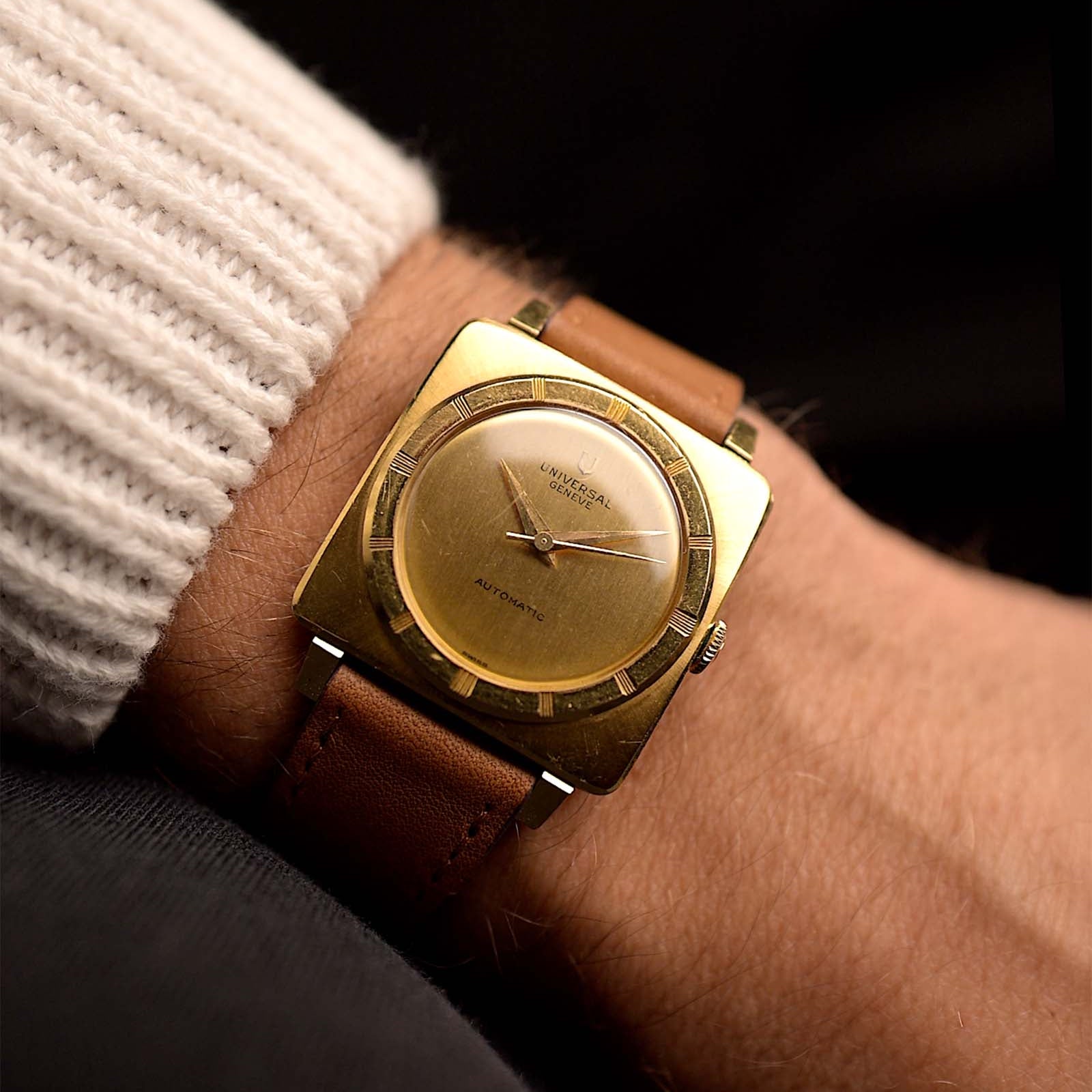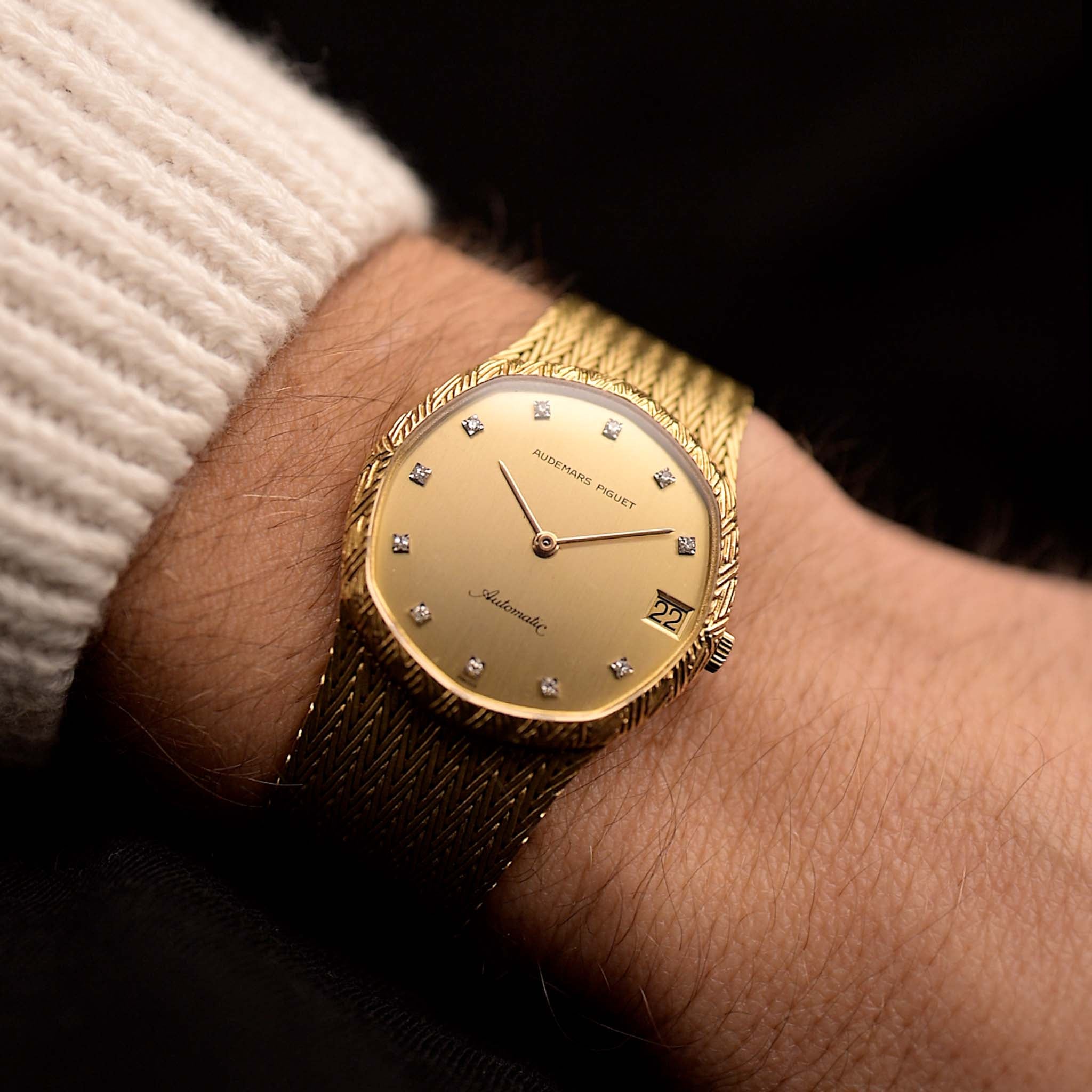Meet the third generation of Patek Philippe automatic watches. And not any ordinary movement as the caliber 350 is neither a full-rotor, a bumper, nor a Micro-Rotor. The Caliber 350 is the first serially produced peripheral rotor and includes a back-side mounted winding stem! It is as extraordinary a concept as it might ever get in traditional watchmaing.
July 17, 2024
Ultra-Thin & Symmetrical - The Secret of Patek Philippe's Backwinding Automatic

Marcus Siems @siemswatches
Collector, Author, Data Analyst
Reference Guide & Database:
Patek Philippe Sub-Second - Center-Second - Shaped Watches - Cal. 12-600AT - Cal. 27-460 - Cal. 350 -
What you may know is that Rolex revolutionized the watch world by patenting the 360 degree winding rotor in 1931. However, the patent - securing the rights on the system for 20(!) years - also blew the competition out of the water and led to decade-long R&D efforts circumventing the full rotor technology.
The second trend that came about during the late 1950s and 1960s was the endeavor of thinner watches. Movado advertized the first "thinnest automatic movement" with bumper-style cal. 331 (4.3mm) in the early 1950s, Universal Geneve launched their Microtor cal. 215 in 1955 (4.2mm) until in 1960 Piaget achieved the thinnest automatic Micro-Rotor movement with their cal. 12P and a whopping 2.3mm.
 Comparing early Micro-Rotor - and thus thin perpetually wound - movements from Universal Geneve (late 1950s, left) and Piaget (1960s, right). Photos Goldammer Archive.
Comparing early Micro-Rotor - and thus thin perpetually wound - movements from Universal Geneve (late 1950s, left) and Piaget (1960s, right). Photos Goldammer Archive.
Finally, the stage is set Patek Philippe. At the late end of these developments in 1969 the Genevan watch manufacturer introduced another thin automatic movement to the market, the caliber 350. Not a record-thin caliber this time but it was also neither a Micro-Rotor, bumper-style, or full-rotor solution: The Cal. 350 was the world's first serially produced peripheral rotor system[1]!
 The Patek Philippe patent (No. 3,412,550) for the peripheral rotor and back-side mounted winding stem. Photo Courtesy of Hodinkee.
The Patek Philippe patent (No. 3,412,550) for the peripheral rotor and back-side mounted winding stem. Photo Courtesy of Hodinkee.
Patek Philippe's caliber 350 was the third generation of their automatic movements and a true revolution. Coming in at 28mm width (just 1mm wider than the standard 27-460) and a mere 3.5mm height it was the perfect base for new ultra-thin designs. And there's a cherry on top... or rather the back: The caliber 350 featured a back-mounted winding stem making the case frontal view a perfectly symmetrical dream[2]!
 The backwinder on the back of the case of a Patek Philippe reference 3569 with cal. 350 from the 1970s. Photo Goldammer Archive.
The backwinder on the back of the case of a Patek Philippe reference 3569 with cal. 350 from the 1970s. Photo Goldammer Archive.
The caliber 350 was initially introduced in 1969 and was produced up until 1986. And from the late 1970s on it was actually one of three perpetually wound options in the Patek Philippe catalogue alongside the full-rotor cal. 27-460 (1960-86) and the Micro-Rotor cal. 240 (1977-today). In 1979 Patek Philippe further improved the cal. 350 and introduced the I-350 (meaning literally "improved 350" with now uni-directional winding) of which about 10,000 units were produced in total[1,3].
The first concept for the system originates actually already in 1955. Swiss watchmaker Paul Gosteli patented the very first peripheral rotor system but never produced a complete watch[1,3]. Patek Philippe on the other hand went on to place the movement in six references over a 17 year production run:
(This is where you might wanna flip your phone)
Ref. 3563

Period: 1969-86
Production: unknown
Movement: Perpetual (Cal. 350)
Specifics: 35mm Wenger case, textured bezel
Source: Archive.Watch, Christie's NY June 2012
Ref. 3569

Period: 1969-86
Production: unknown
Movement: Perpetual (Cal. 350)
Specifics: 39mm Wenger case, textured bezel
Source: Christie's HK Nov. 2016
Ref. 3573

Period: 1970-86
Production: unkown
Movement: Perpetual (Cal. 350)
Specifics: round-cushion Baumgartner case (36mm)
Source: Bachmann & Scher
Ref. 3580

Period: 1972-80
Production: 500 steel
Movement: Perpetual (Cal. 350)
Specifics: Ateliers Reunis Ellipse (36mm), only steel
Source: Collectability, Christie's HK Nov. 2022
Ref. 3585

Period: 1970-85
Production: unknown
Movement: Perpetual (Cal. 350)
Specifics: 36mm TV-case
Source: Phillips Geneva Nov. 2018
Ref. 3586

Period: 1970-85
Production: unknown
Movement: Perpetual (Cal. 350)
Specifics: Ellipse, Ateliers Reunis case (36mm)
Source: Watch.Archive
These are the pieces that are today almost forgotten. The Patek Philippe peripheral rotor and the backwinding mechanism are barely existent in our horological consciousness... It's hard to say what's the reason for it. It could be that a often mentioned drawback of the construction is that moisture from the skin might get easier into the case[1]. Also, the invention of the cal. 240 in 1977 is already a superior technology.
 Case details on a Patek Philippe (vertical) Ellipse ref. 3580 in steel. Photos Courtesy of Christie's HK Nov. 2022.
Case details on a Patek Philippe (vertical) Ellipse ref. 3580 in steel. Photos Courtesy of Christie's HK Nov. 2022.
The watch world in the 1970s has been in turmoil - experimentation was key and novel concepts spread all around the Swiss landscape. The cal. 350 has its disadvantages but it also enabled some of the most interesting Patek Philippe designs at the time. The perfect symmetry made the watch suitable for both left- and right-handed wearers. These six references were the canvas for some of the most intricate case and dial(!) decorations.
 The clean symmetric look on the wrist just gets me every time. Does me drooling over it permeate the backwinder as well? Photo Goldammer Shop.
The clean symmetric look on the wrist just gets me every time. Does me drooling over it permeate the backwinder as well? Photo Goldammer Shop.
A Patek Philippe cal. 350 watch is definitely an oddity - the same reference can even come with different lug executions! You'll rarely see that an established and ultra-traditional watch brand - like Patek Philippe - will engage in such a high level of weirdness[4]... Say what you will but these odd pieces ooze some serious style, encapsulate 1970s design and are without a doubt historically highly relevant.
References
[1] The Innovative Patek Philippe Movement You Probably Forgot About (Or Never Even Knew); Jon Bues, Hodinkee [Link]
[2] The Beauty Within -- Patek Philippe Caliber 350; PlusUltra [Link]
[3] Patek Philippe 350; WatchWiki [Link]
[4] When IS An Ellipse Not An Ellipse?; Tania Edwards, Collectability [Link]
All rights on text and graphics reserved to the Author.




























Leave a comment